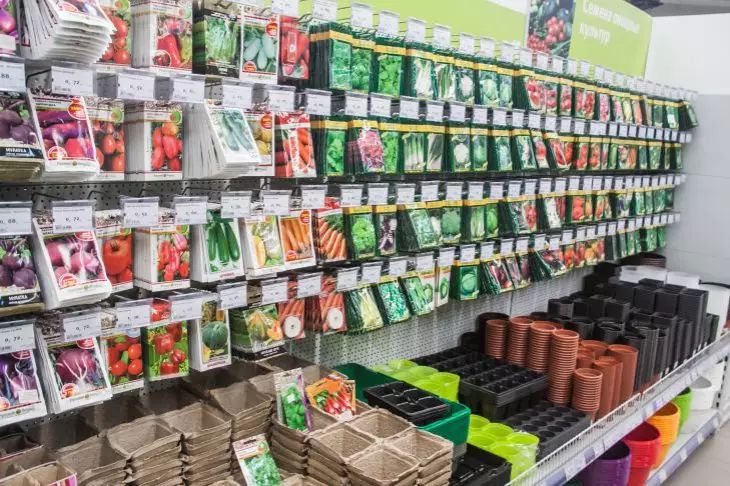How to sow seeds: subtleties that will allow you to get abundant shoots
Difficulties with sowing seeds arise not only for beginners, but sometimes also for experienced gardeners.
To get abundant, friendly shoots, you will have to pay attention to the subtleties that must be taken into account during sowing.
Size matters
The golden rule of sowing is: the smaller the seeds, the smaller the layer of soil should be above them. If pumpkin seeds can be planted 2 cm deep, then strawberries or marjoram are sown on the surface of the soil and are not covered with soil at all. Radishes can be planted to a depth of 0.8 mm or 1 cm, and cabbage to a depth of about 4–5 mm.
When sowing small seeds (less than 1 mm), it is necessary to lightly compact the top layer of soil, and only then spread them over the surface.
If you don’t compact the seeds, the watering will pull them deep into the soil and they won’t sprout.

Another life hack that is often used when sowing strawberries is using snow.
Tamp the soil down a bit, put a layer of snow on top, compact it slightly, and spread the seeds on the snow. This way you can sow not only strawberries, but also any other plants with small seeds. The snow will simply help distribute them evenly over the surface.
Consider the characteristics of the plant
The seeds of many plants require stratification. That is, they need to be kept in the cold for some time. The most convenient way is to sow them in a container and put them in the refrigerator or on the balcony, where the temperature is about the same as in the refrigerator.
If you live in a private house, you can bury it in a snowdrift. Stratification is carried out for 3-4 weeks. Sometimes longer. It all depends on the specific plant.
Seeds of perennial cold-resistant crops require stratification.
Without cold treatment they may not sprout or sprout very poorly, as the natural rhythm is disrupted. After all, in the natural environment, shoots appear in the spring, after the winter cold.
Break the integrity of the shell
Many seeds do not germinate for a long time because they are protected by a thick, strong "shell" of shell. Moisture penetrates through the shell for a long time, the process can take several months.
For example, to speed up the germination of nuts or fruit pits, their shells are damaged with a file or metal saw.
For smaller seeds with soft shells, you can use a needle.
If these are seeds of herbaceous plants, such as peppers or tomatoes, gardeners dip them in hydrogen peroxide for 15-20 minutes. It not only softens the shell, but also has disinfectant properties.
If you are having trouble getting some plants to germinate, learn more about them. For example, many seeds lose their germination capacity very quickly, so they need to be sown immediately after harvesting.
